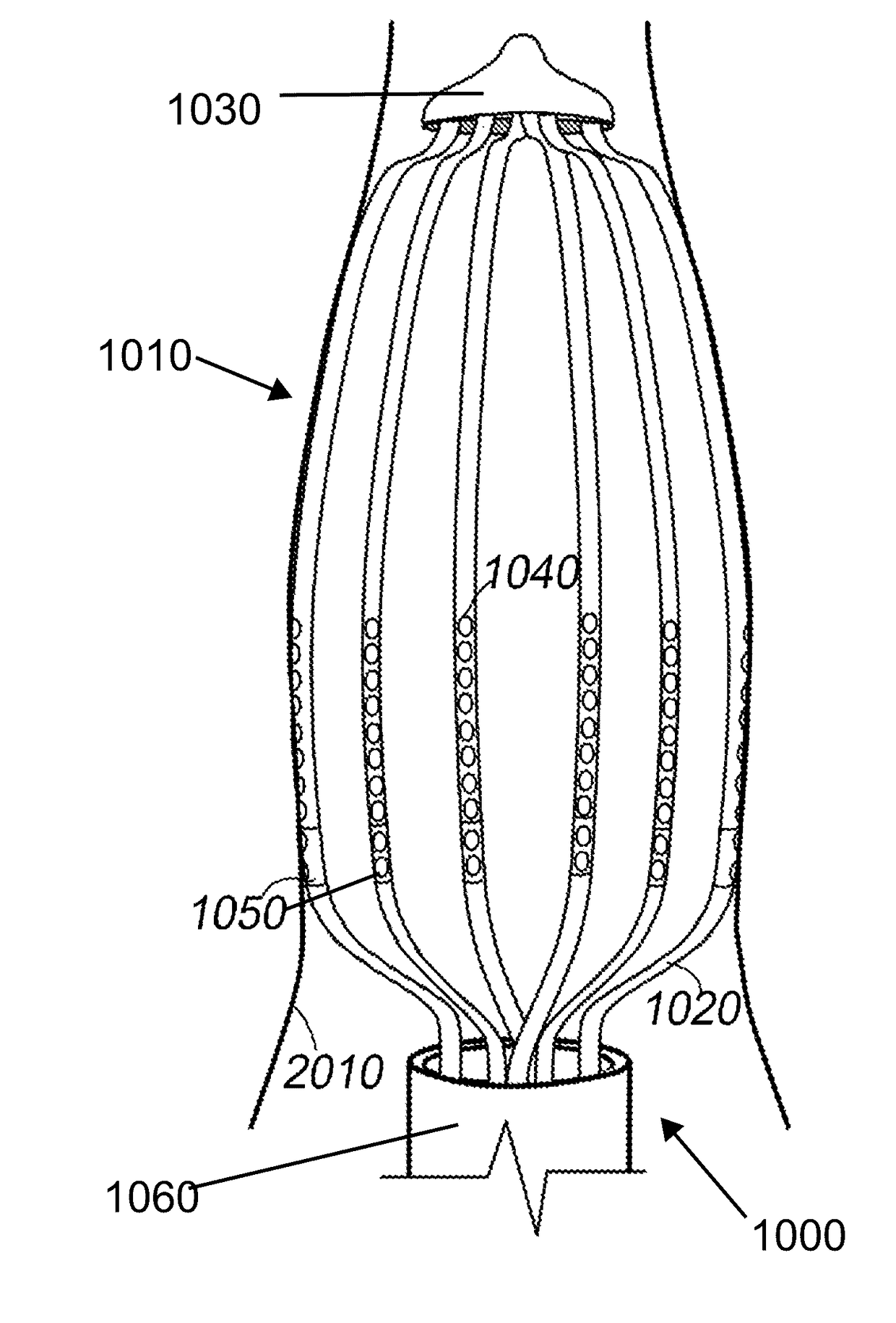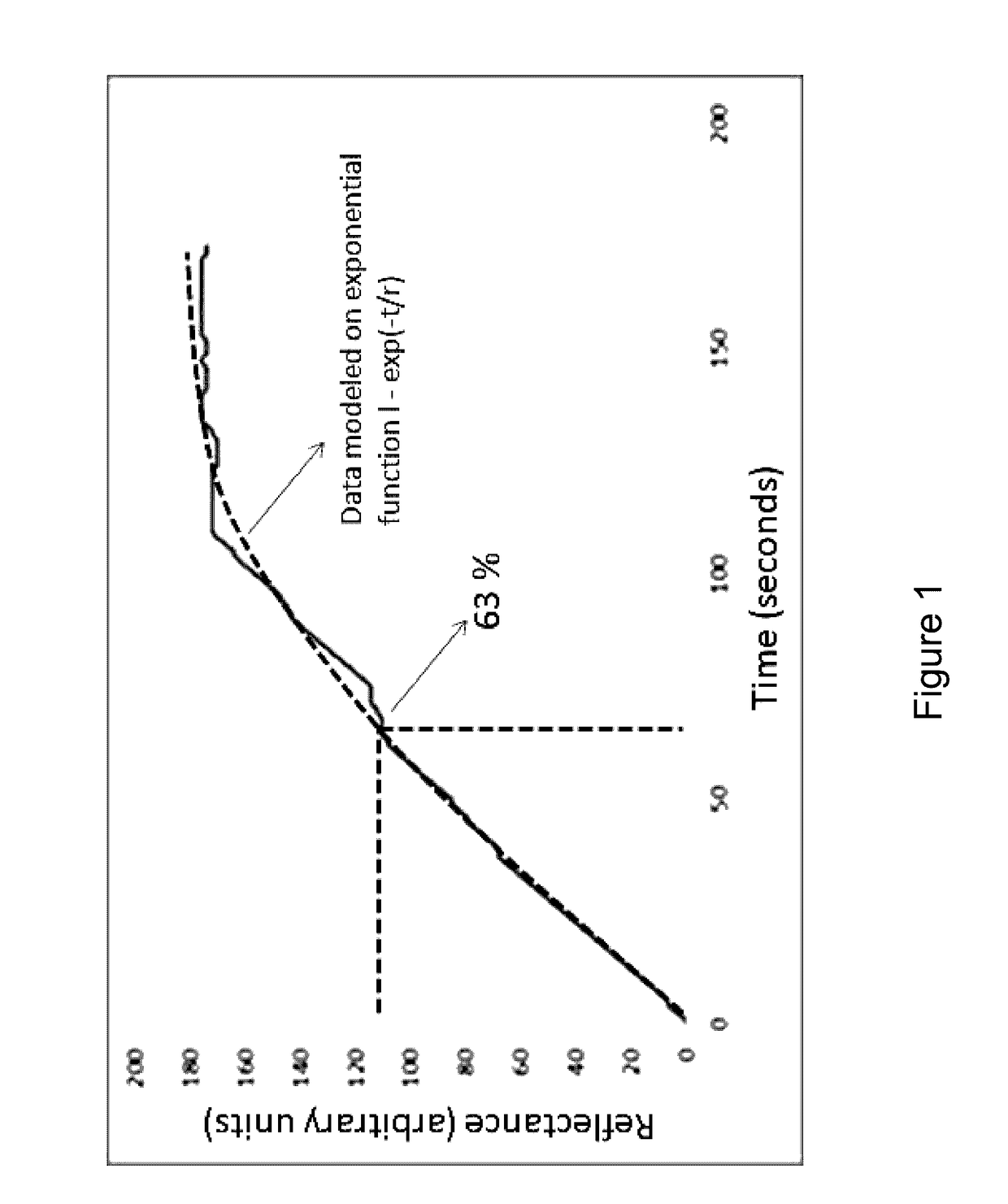Apparatus and method for assessing tissue treatment
a tissue and apparatus technology, applied in the field of tissue monitoring apparatus, can solve the problems of difficult or flawed methods incorporating optical spectra collection, standard ablation catheters in cardiac space are typically inherently unstable in operation, and the method incorporating diffuse reflectance spectroscopy (dr) in the catheter would suffer from these issues
- Summary
- Abstract
- Description
- Claims
- Application Information
AI Technical Summary
Benefits of technology
Problems solved by technology
Method used
Image
Examples
Embodiment Construction
[0059]In general, the invention comprises a medical procedure and corresponding medical devices for generating optical sensing data indicative of an optical property of a tissue. More specifically, the invention relates to a tissue monitoring apparatus, a tissue monitoring method and an ablation lesion monitoring, measuring, and controlling algorithm incorporating diffuse reflectance spectroscopy (DRS) and / or Arrhenius model thermal denaturation kinetics for determining the characteristics of the lesion, nerves, or the tissue, especially for identifying the completion of the ablation lesion. The invention pertains to a device for and method of real time monitoring of lesion formation as ablation is being carried out.
Setting Appropriate End Points for Ablation
[0060]As tissue is undergoing heat denaturation, for example, by ablation, the tissue's optical properties change. Beauvoit et al. reported that the mitochondrial compartment is the primary cause of l...
PUM
 Login to View More
Login to View More Abstract
Description
Claims
Application Information
 Login to View More
Login to View More - R&D
- Intellectual Property
- Life Sciences
- Materials
- Tech Scout
- Unparalleled Data Quality
- Higher Quality Content
- 60% Fewer Hallucinations
Browse by: Latest US Patents, China's latest patents, Technical Efficacy Thesaurus, Application Domain, Technology Topic, Popular Technical Reports.
© 2025 PatSnap. All rights reserved.Legal|Privacy policy|Modern Slavery Act Transparency Statement|Sitemap|About US| Contact US: help@patsnap.com



